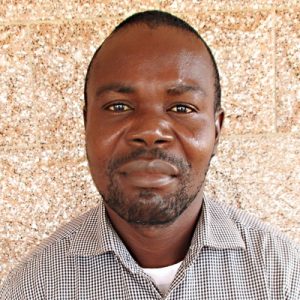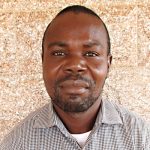Gbonkogbonko is an interior community that has all its natural vegetation intact. The large trees and the long palm trees refine the gentle sea wind from the Atlantic Ocean, providing a very cool atmosphere for the entire village.
The houses are typical of that of a traditional Bullom setting. The majority of them are built from locally made mud blocks with some cement plastering.
This lush vegetation blesses the community with farmlands from where community people derive their livelihood. Most people here engage in different types of farming in order to make multiple "ends" meet. For example, there are people here who plant cassava and do swampland farming. Down at the swamp, they grow vegetables. There are also those who plant rice and vegetables. Still, there are others who harvest palm kernels for the production of palm oil. A not-too-active group domesticates animals to sell to customers who later take the products to the one-day markets around the chiefdom. However, most of the produce ends up in the capital city, Freetown.
Kankalay Primary School came into being thanks to a farmers association named "Ta Ninke Su," which means "please help us." The association, wanting to seek government support through the Agricultural Ministry, approached the head office in Freetown for help. The head office said that a school in the community is required before they lend their support.
Upon their return, the farmers called the community together and explained their experience. The community resolved to have a school started that day while meeting under a cola nut tree. 56 pupils were enrolled; 36 boys and 20 girls. In 1999, they relocated to late Pa Lamin Kamara’s house. The enrollment was now up to 100; 59 boys and 41 girls. In 2001, the community mobilized to construct a three-classroom mud brick structure for classes one to three.
The school has continued to grow to a present enrollment of 312 students. It has managed to improve academically over the same period, but it faces one significant challenge - the lack of access to water.
A hand-dug well is on the school grounds, but it runs dry most of the year and does not even have a pump to fetch water when it is actually available. Hand-dug wells have always run dry at the time people need them the most. Often, they are not dug deep enough to sustain year-round water availability.
As a result, this school’s current water source is the nearest swamp. The road to the swamp is long and overgrown. This is a natural source with heavy reliance on the weather. Two seasons determine the water quantity at the swamp: the rainy and the dry seasons. The rainy season supplies the swamp with enough water for the community's domestic and farming uses, while the dry season drains most of this supply.
When the dry season peaks, water quantity can drop so low and forces people to dig more holes further down into the swamp to scoop water, and this is when it becomes even deadlier to drink from this source.
"Living with the thoughts of cholera and diarrhea attack is even more psychologically torturing," explained Hassan Bangura.
"I always have oral rehydration salts (a treatment to prevent dehydration caused by diarrhea) on standby in my home because I am always thinking of the contaminant level of our drinking water."
The acute water shortage here compels the students to drink water fetched from very contaminated sources. Drinking water from contaminated sources exposes the people to deadly waterborne diseases. To make matters worse, there is no health center in this community or its neighboring community. People rely on street peddlers who are mostly not trained to administer drugs. Too much money is spent on expired drugs that compound the problem.
Here’s what we’re going to do about it:
Well Rehabilitation
The well marked for this overhaul is needs major work to supply adequate, clean water to the community year round. The pump will be removed, and a hand auger will be lowered inside and powered by a drill team. This hand auger will allow the team to drill several meters deeper to hit a sufficient water column that will ensure the well supplies water throughout all seasons.
As the team drills, casing will be installed, transforming the bottom of this hand-dug well into a borehole. PVC piping will connect this lower system directly to the pump, a construction that we know will also improve the quality of water.
Once this plan is implemented, everyone within the community will have access to safe drinking water in both quality and quantity, even through the dry months.
Hygiene and Sanitation Training
There will be hygiene and sanitation training sessions offered for three days in a row.
No handwashing stations were observed here. After our visit, the hygiene and sanitation trainer decided it would be best to teach community members how to build a tippy tap (a hand-washing station built with a jerrycan, string, and sticks). They will use these tippy taps for handwashing demonstrations, and will also teach about other tools like dish racks and the importance of properly penning in animals.
These trainings will also strengthen the water user committee that manages and maintains this well. They enforce proper behavior and report to us whenever they need our help solving a serious problem, like a pump breakdown.

 Borehole Well and Hand Pump
Borehole Well and Hand Pump






























